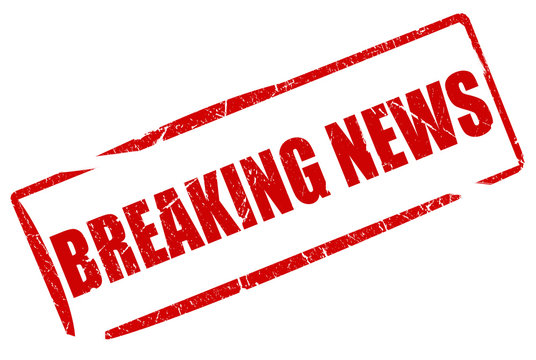1. Introduction: A Brief Overview
When you think about the relationship between Iran and the USA, what comes to mind? Conflict, diplomacy, intrigue? It’s a multifaceted saga that stretches back decades and remains pivotal in global politics today. In this article, we’ll dive into the historical context, recent developments, and what the future might hold for these two nations.
2. Historical Context
2.1 The Iranian Revolution
Let’s rewind to 1979. Iran was buzzing with discontent against the Shah’s regime, which many viewed as a puppet of the USA. The Iranian Revolution kicked off, leading to the establishment of an Islamic Republic under Ayatollah Khomeini. Suddenly, the US was seen as the villain, having supported the Shah https://wispotlight.com, and the embassy hostage crisis that followed solidified this enmity.
2.2 US-Iran Relations Post-1979
Since then, the relationship has been a rollercoaster. The Iran-Iraq War in the 1980s, the downing of Iran Air Flight 655, and sanctions from the West have all contributed to a deep-seated mistrust. Over the years, both nations have danced around diplomatic talks, only to stumble back into hostility.
3. Recent Developments
3.1 Nuclear Negotiations
Fast forward to the 21st century. Iran’s nuclear program became a focal point of contention. The 2015 Joint Comprehensive Plan of Action (JCPOA) was hailed as a breakthrough—an agreement that aimed to limit Iran’s nuclear capabilities in exchange for sanction relief. But then came the Trump administration, which withdrew from the deal in 2018, reigniting tensions.
3.2 Sanctions and Economic Impacts
The reimposition of sanctions has taken a toll on Iran’s economy. With soaring inflation and unemployment, many Iranians have faced hardships. How does one reconcile a nation’s aspirations with the heavy hand of economic pressure? This has led to protests within Iran, as citizens voice their frustrations against both their government and foreign interference.
4. Media Coverage of US-Iran Relations
4.1 Different Perspectives
The media plays a crucial role in shaping perceptions of this complex relationship. In the USA, coverage often emphasizes Iran’s nuclear ambitions and its influence in the Middle East. Conversely, Iranian media frames the narrative around Western aggression and sanctions. It’s like looking at two sides of a coin, where each party sees a different picture.
4.2 Social Media Influence
Social media has transformed how these narratives spread. Platforms like Twitter and Instagram allow citizens to voice their opinions and share news, often bypassing traditional media filters. This has led to a more nuanced understanding of the public sentiment on both sides, highlighting the human element behind the political machinations.
5. The Role of Other Countries
5.1 European Union’s Stance
The European Union has tried to mediate between the US and Iran, emphasizing the need to preserve the JCPOA. But with the US out of the agreement, can the EU hold its ground? The complexities of international relations mean that EU’s influence can be both a boon and a burden.
5.2 Russia and China’s Involvement
Meanwhile, Russia and China have stepped in, eager to strengthen ties with Iran. This geopolitical chess game adds another layer of complexity. How will the US respond as its traditional allies seem to pivot towards these countries? It’s a delicate balance that could tip in unexpected directions.
6. Impact on Global Politics
6.1 Middle East Stability
The Iran-US relationship is a major player in the stability of the Middle East. With conflicts in Syria, Iraq, and Yemen, both nations’ actions ripple through the region. Allies and adversaries alike watch closely—any shift in this dynamic can lead to significant consequences.
6.2 Humanitarian Concerns
Don’t forget the human aspect. Sanctions and conflicts have humanitarian implications, affecting civilians the most. Access to food, medicine, and basic needs often takes a back seat in political discussions. What’s the cost of this ongoing conflict on ordinary lives?
7. Public Opinion in the USA and Iran
7.1 American Perceptions
In the USA, public opinion is mixed. Some see Iran as a significant threat, while others advocate for diplomacy. The narrative is shaped by political leaders, media portrayals, and the lingering memories of past conflicts.
7.2 Iranian Views on the US
On the flip side, many Iranians hold complex feelings towards the US. While they may oppose American policies, there’s also a curiosity about American culture and values. This dichotomy reveals a deeper yearning for understanding beyond the political barriers.
8. Future Prospects: What Lies Ahead?
So, what’s next? Can we expect a thaw in relations? With ongoing negotiations and shifting global dynamics, anything is possible. The need for dialogue is critical, but it’s often easier said than done. Both nations face internal pressures that can complicate any potential breakthroughs.
9. Conclusion: A Path Forward
Navigating the US-Iran relationship is like walking a tightrope. Both nations have their interests, histories, and aspirations. As global citizens, it’s vital to remain informed and engaged. After all, understanding is the first step toward peace. In a world increasingly interconnected, fostering dialogue might just pave the way for a more harmonious future.

